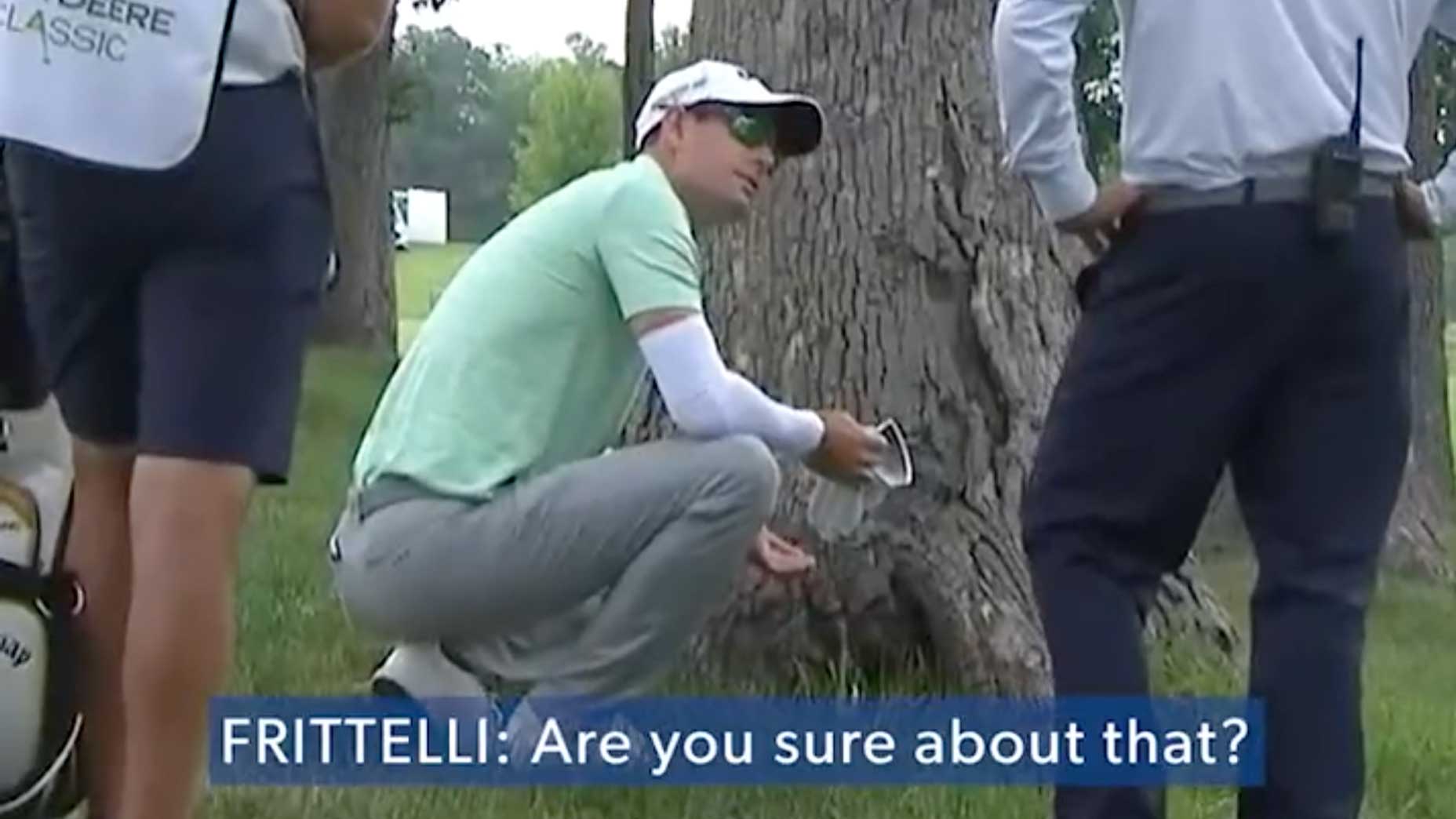You can’t get penalty-free relief if your ball is simply up against a tree. But you can get penalty-free relief if your ball is inside an animal hole.
So Dylan Frittelli started to do some rules math.
To set up the lively sequence during Friday’s second round of the John Deere Classic, the pro snap-hooked his tee shot left on the par-5 17th at TPC Deere Run, his ball looked to have finished at the base of a tree, and Frittelli called for a rules official. Though it was hard to tell on the PGA Tour Live broadcast where the ball exactly was, the PGA Tour’s Twitter account described the interaction as: “Dylan Frittelli and a rules official discuss a possible animal hole inside tree roots.”
And discuss they did. PGA Tour Live captured this part of the conversation, which was also shared by the Tour’s Twittter account:
“OK, but if that hole goes 5 feet under the tree and my ball’s still 5 feet under the tree and I can’t reach it, then you don’t get relief?” Frittelli asked the official.
“That’s correct,” the official said. “Because you can’t make an argument that you might be able to play the shot.”
“I understand, but if this burrowing hole goes down another 6 feet and you’ve seen it go in that hole and it’s keeping the hole, you can’t play it, you still don’t get relief?” Frittelli asked.
“That’s correct,” the official said.
“Are you sure about that?” Frittelli asked.
“I’m positive,” the official said.
“So if there’s an ant hill …” Frittelli began.
“You’re inside the tree,” the official said.
“So if you’re in an ant hill and it goes buried inside the ant hill, you don’t get relief from that?” Frittelli asked. “You can’t hit it because it’s 5 feet inside the ant hill?”
“If there’s something that prohibits you from playing that shot, if that weren’t there, then you would not get relief,” the official said. “Such as a tree, a bush.”
At this point, Frittelli started to take his unplayable drop, and he eventually finished with a double-bogey seven.
“I disagree with the ruling,” he told the official. “I understand your interpretation, but I disagree with the ruling. I’ll still check after if you can have somebody there to speak to me after.”
So what gives here? Frittelli was looking for relief from an abnormal course condition — the animal hole — under Rule 16.1.
But the rules book spells out his case in interpretation 16.1a(3)/3, which states (deep breath):
“In deciding whether relief should be denied under Rule 16.1a(3) for a ball lying underground in an animal hole, the decision is made based on the lie the ball would have at the entrance to the hole as opposed to the ball’s position underground in the hole.
“For example, in the general area, a player’s ball comes to rest underground in a hole made by an animal. A large bush is immediately next to and overhanging the entrance to the animal hole.
“The nature of the area at the entrance of the animal hole is such that, if the animal hole was not there, it would be clearly unreasonable for the player to make a stroke at the ball (because of the overhanging bush). In such a situation, the player is not allowed to take relief under Rule 16.1b. The player must play the ball as it lies or proceed under Rule 19 (Ball Unplayable).
“If the ball lies in an animal hole but is not underground, the spot of the ball is used to determine whether it is clearly unreasonable to play the ball and if Rule 16.1a(3) applies. If Rule 16.1a(3) does not apply, the player is allowed relief without penalty under Rule 16.1b. The same principles would apply to a ball that is underground in an immovable obstruction.”
Or, in other words, the official was right.
